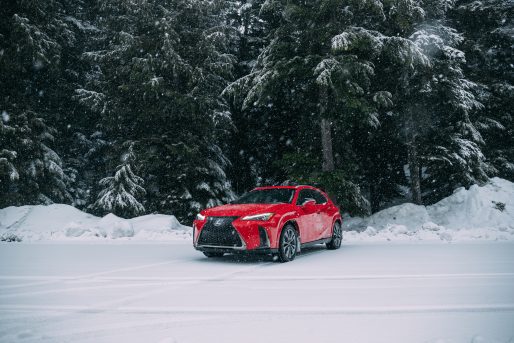
Lexus serves tennis with multi-year ATP Tour partnership
Lexus continues its association with the ATP in a further three-year partnership with the top tier of men’s international pro tennis.

Lexus continues its association with the ATP in a further three-year partnership with the top tier of men’s international pro tennis.

There is much more to being a top chauffeur than driving smoothly and arriving on time, as Lexus LM driver Rob Mitchelmore explains.

The protection you and your Lexus deserve delivered through effortless car insurance: one fixed price and three years of expert care.

Our regularly updated review of the awards, achievements and accolades bestowed on Lexus UK’s cars, services and people during 2025.

What should you bear in mind when driving in wintery conditions? Read through our winter driving tips to help you stay safe on the roads.

‘The Loft’ by Brussels Airlines and Lexus has been named Europe’s best airport lounge for the seventh year running in the World Travel Awards.

Be sure that your car’s tyres are legal and in good condition with six simple tyre checks that every Lexus owner can regularly carry out.

What are the latest features of Climate Concierge, and how does it keep a comfortable cabin environment regardless of the outside temperature?

For all of those who continue to love the Lexus LBX (launched in 2023), a newer limited edition model will be available from September 2025 to May 2026. The model in question? […]

The newly launched Lexus ‘Signature Shot’ machine puts AI and sporting brilliance to the test as tennis enthusiasts can now experience the power and precision of of professional players’ unforgettable tennis serves […]

Does the Lexus Sport Concept offer clues to a potential new sports car, even a successor to the iconic Lexus LFA? Here’s the official answer.

From 27th August to 6th September, the Venice Lido became a crossroads between cinematic and automotive innovation as Lexus illuminated the city following its announcement as the official car and sponsor of […]

What do professional road testers think of our flagship e-SUV’s improved power, efficiency and performance? Read their 2026 Lexus RZ reviews.

Tennis stars Jamie Murray and Laura Robson ‘served at speed’ in an epic car rooftop stunt that pushed the sport to two new world records.